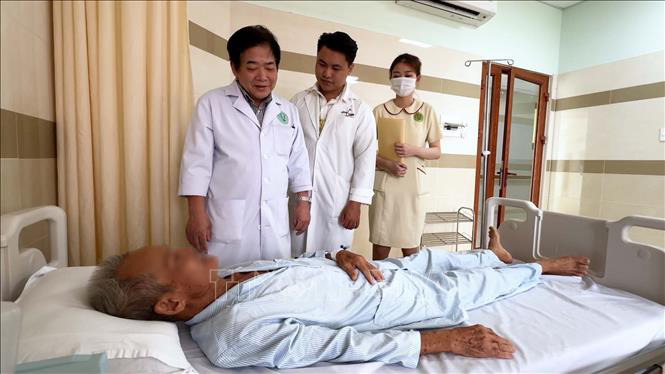
Doctors examine patients after intervention - Photo: VNA
Mr. NVT was brought to the hospital by his family with high blood pressure, difficulty breathing, chest tightness, abdominal pain, and blood in the urine. He had been taking medication for about a week but it did not improve.
According to the patient's family, Mr. T. had a history of kidney stones and had undergone laparoscopic surgery to remove them a year ago. Doctors inserted a JJ catheter into him. This is a hollow tube made of flexible plastic or silicone, placed in the ureter to ensure urine can flow from the kidney to the bladder.
This tube needs to be removed from the patient's body after a period of time depending on the doctor's instructions in each specific case.
However, after being discharged from the hospital, Mr. T. did not go for regular check-ups as advised by the doctor. Recently, he complained of fatigue, abdominal pain, bloody urine, and pale skin.
His family bought medicine for him from outside, but the pain did not subside, so they took him to Can Tho University Hospital for treatment.
Here, doctors examined and conducted clinical tests on Mr. T., concluding that he had chronic obstructive pneumonia, urinary tract infection, kidney stones, acute kidney failure; especially in the right kidney - bladder there was a foreign object covered with stones and decided to perform emergency surgery on June 15.
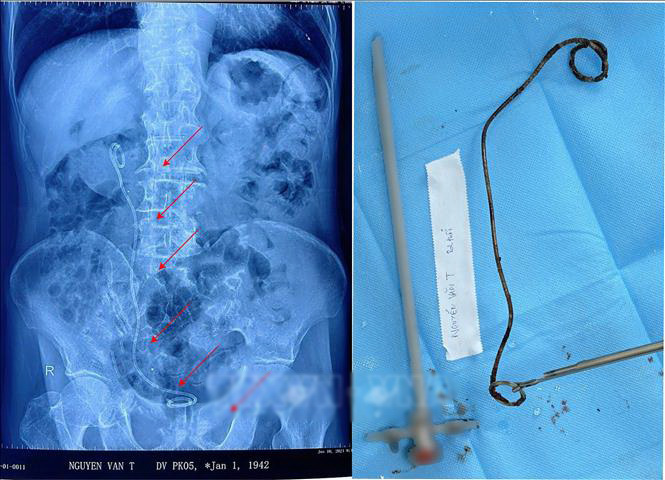
The JJ catheter, which was more than 20cm long, had turned black and was covered with stones after being removed from the patient - Photo: VNA
Doctors said this was a difficult intervention with many risks due to the patient's old age, many underlying diseases, large foreign objects that had been in the body for too long, causing the mucosa to adhere tightly around it (also known as mosaicism). During surgery, it could cause the ureteral mucosa to be pulled, resulting in very serious complications.
After more than an hour, with the concentration and coordination of many specialists, the foreign object was safely removed from the patient. The foreign object was a JJ catheter (about 20 - 25cm long) that had turned black and was covered with gravel.
After 2 days of intervention, the patient is now awake, responsive, vital signs are stable, pain symptoms have significantly reduced, no more blood in urine, and can eat and drink. The patient continues to be monitored and examined post-operatively.
Associate Professor, Dr. Dam Van Cuong, Director of Can Tho University Hospital, the main doctor of the surgical team, advised: when there are signs of unusual pain that lasts for many days, people should immediately go to reputable medical facilities for examination and treatment intervention.
At the same time, after performing surgery or procedures, especially those involving catheter placement, patients need to remember to return for follow-up visits as instructed by the doctor to have the catheter removed, avoiding complications, even life-threatening situations.
Source: https://tuoitre.vn/ong-sonde-hon-20cm-ngu-quen-trong-than-bang-quang-cu-ong-82-tuoi-20240618080209691.htm





![[Photo] General Secretary To Lam receives the Director of the Academy of Public Administration and National Economy under the President of the Russian Federation](/_next/image?url=https%3A%2F%2Fvphoto.vietnam.vn%2Fthumb%2F1200x675%2Fvietnam%2Fresource%2FIMAGE%2F2025%2F12%2F08%2F1765200203892_a1-bnd-0933-4198-jpg.webp&w=3840&q=75)








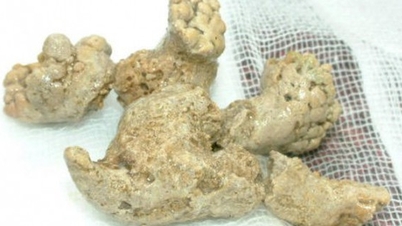

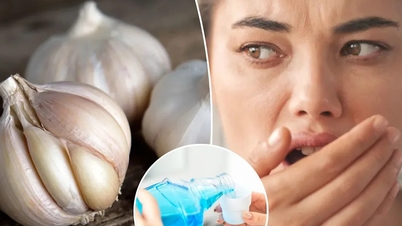

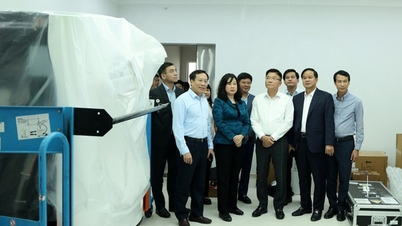
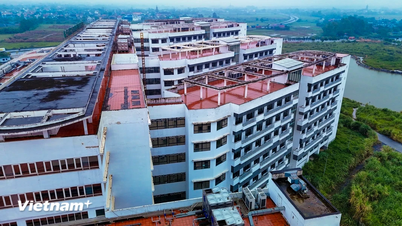

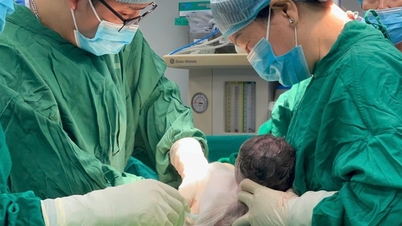
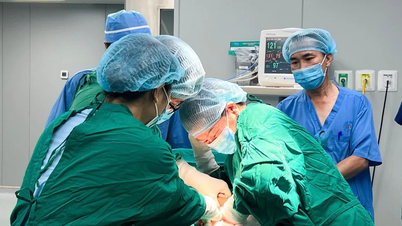









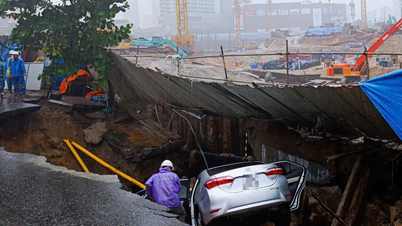


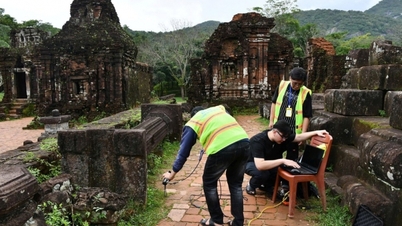






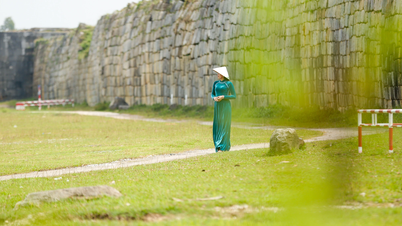





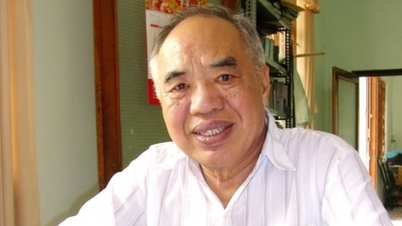



























































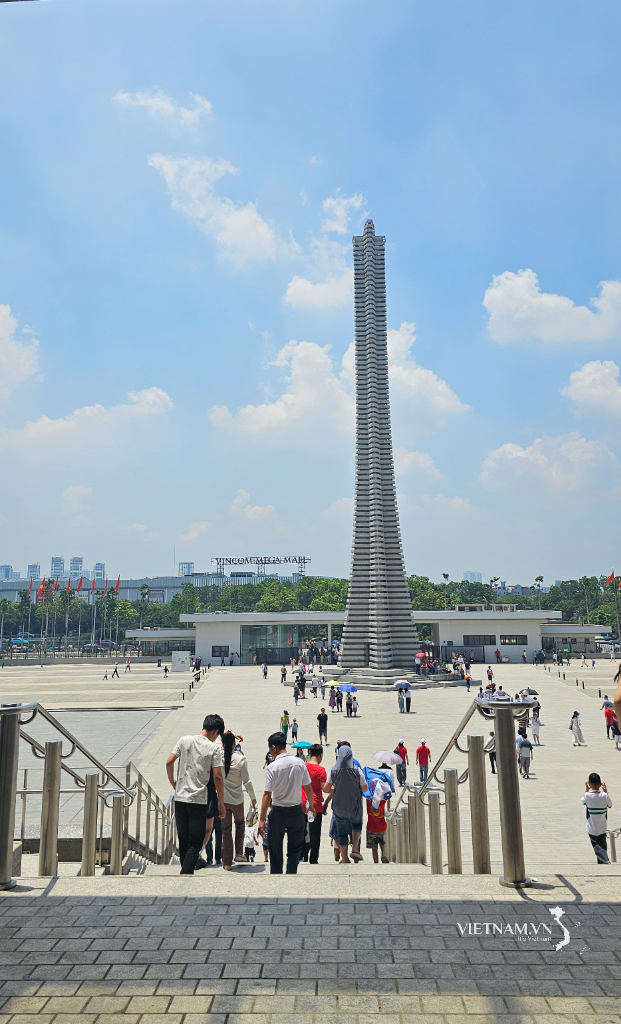




Comment (0)